Edward John Smith was a British sea captain and naval officer with the White Star Line before fatefully becoming the captain of the RMS Titanic in 1912.
Shortly after 11:40 p.m. on April 14, 1912, Captain Edward John Smith made his way to the deck of the Titanic after feeling a strange vibration. He asked a crew member what the ship had struck and received a chilling answer: “An iceberg, sir.”
The rest of the story is well known. The ship sank. And as the captain of the Titanic, Smith apparently went down with it.
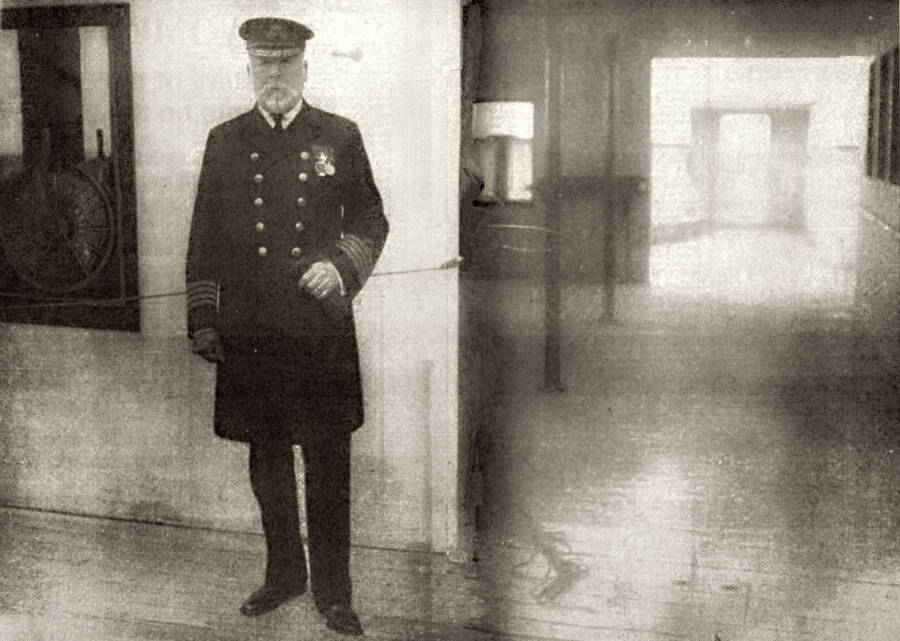
Public DomainEdward Smith on the deck of the RMS Titanic. April 10, 1912.
But Smith’s actions before, during, and after the catastrophic iceberg strike are difficult to unravel. Where was the captain of the Titanic when the ship hit the iceberg? How did he act as panic descended on the 2,240 passengers and crew members aboard? And was the sinking of the doomed ship, and the deaths of some 1,500 people aboard, his fault?
More than 100 years later, the truth can be difficult to discern.
The Seafaring Career Of Edward Smith
Born on January 27, 1850 in Staffordshire, England, Edward John Smith started his seafaring journey at a young age. At 12 or 13, he left school and by 1867 had joined the crew of the Senator Weber.
From there, he enjoyed a fairly rapid rise. Smith became second mate in 1871, a first mate in 1873, and a master in 1875. In 1880, he took a job at White Star Line and went on to captain some of the company’s largest ships, including the Baltic, the Adriatic, and the Titanic‘s sister ship, the Olympic.
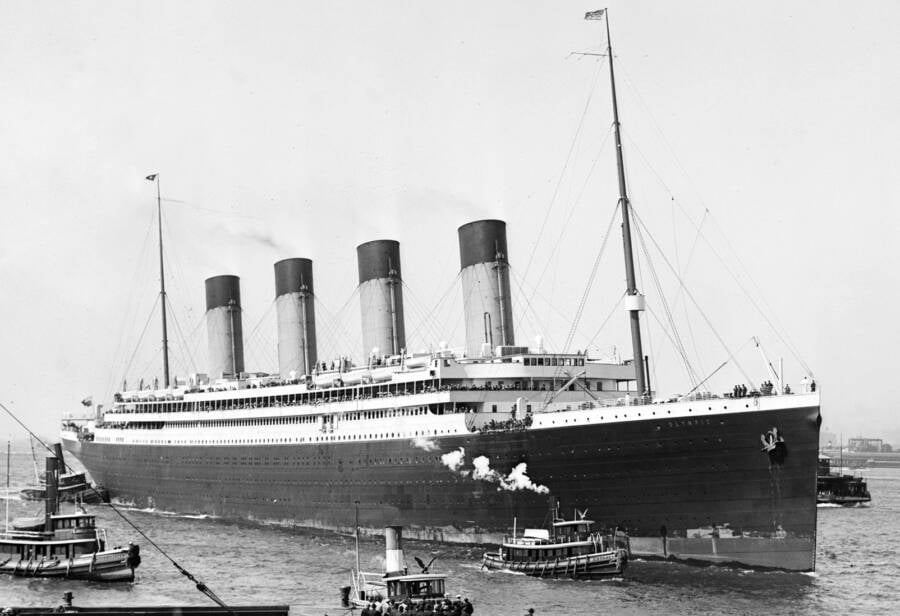
Library of CongressThe RMS Olympic, the Titanic‘s sister ship. June 1911.
On the Olympic, Smith was involved in the worst catastrophe of his career (until he became captain of the Titanic). In September 1911, the Olympic collided with the HMS Hawke off the Isle of Wight. Though Smith was reportedly not directing the ship at the time, the Royal Navy protested that the Olympic had caused the collision by taking an abrupt turn. White Star Line vehemently disagreed, but ended up having to pay high legal fees.
Despite this, Smith maintained his sterling reputation. He was even known as the “Millionaire’s Captain” since, as the captain of some of White Star Line’s biggest ships, he often brushed shoulders with wealthy passengers.
So he seemed an obvious choice to become captain of the RMS Titanic, White Star Line’s flagship and the biggest ship ever built.
The Unsinkable Ship Sets Sail
On April 10, 1912, the RMS Titanic set off on its maiden journey from Southhampton to New York. Not only was the grand ship packed with amenities like a squash court, an indoor swimming pool, and a gym, but many believed that it was “practically unsinkable.” Edward Smith himself allegedly declared: “Even God himself couldn’t sink this ship!” (Though the quote has also been attributed to a deckhand, if it was ever said at all.)
After leaving from its final port of Queenstown, Ireland (present-day Cobh), the Titanic‘s first few days at sea passed smoothly. But the ship soon started receiving warning messages about ice.

Public DomainPurser Hugh Walter McElroy and Captain Edward J. Smith aboard the RMS Titanic. April 11, 1912.
By 7:30 p.m. on April 14, the Titanic had received five warnings about ice. Smith saw some of these and posted them in the chart room, but some reportedly got lost in the muddle of other messages. With so many passengers on board, the radio operators were overwhelmed by the number of telegrams being transmitted.
At 10:55 p.m., the Californian — the nearest ship to the Titanic — radioed to say that the ship had come to a full stop because of the treacherous icy water. But the Californian‘s operator failed to mark his messages as urgent enough to show to Smith, and the Titanic’s operator was so overwhelmed with incoming missives that, according to the New York Times, he snapped back: “Shut up, shut up! I am busy!”
Less than an hour later, at 11:40 p.m., the Titanic hit an iceberg.
How The Captain Of The Titanic Reacted To The Sinking
Edward John Smith was off-duty and purportedly asleep when the ship hit ice. In fact, at least one passenger claimed he had been drinking before the catastrophic collision. However, he quickly reacted when he felt a vibration.
Smith purportedly appeared on the bridge shortly thereafter and asked First Officer William Murdoch what had happened. Murdoch replied that the ship had struck an iceberg, and Thomas Andrews, the ship’s designer, soon reported that the ship would sink in a matter of 60 to 90 minutes.
At 12:05 a.m., Smith gave the order to ready the ship’s lifeboats. About ten minutes later, he instructed the radio operators to send a distress signal. When the Californian did not answer — only the Carpathia, four hours away, did — Smith also commanded the crew to send up emergency flares.
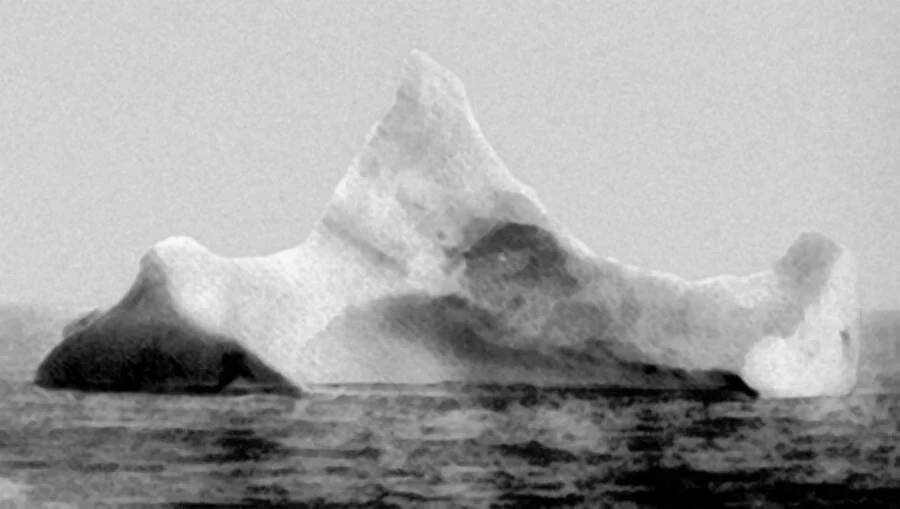
Wikimedia CommonsThe iceberg that likely sunk the Titanic, smeared with red paint.
During this time, Smith also sometimes appeared rattled and distracted. Though he’d ordered the lifeboats to be uncovered, he apparently forgot to give the final command to lower them until 12:45 a.m., when Second Officer Charles Lightoller reminded him. He also apparently confused the Olympic and the Titanic when he commanded that the boats be lowered to the promenade deck which, on the Titanic, was partially enclosed with glass windows.
Sometime after 2 a.m., with the Titanic sinking rapidly, Smith released his crew. “Well boys, you’ve done your duty and done it well,” he said according to crew member James McGann, as reported in the Liverpool Echo. “I ask no more of you. I release you. You know the rule of the sea. It’s every man for himself now, and God bless you.”
The ship slipped beneath the frigid waters of the North Atlantic Ocean at 2:20 a.m. on April 15, 1912, taking some 1,500 people with it. But what happened to the Titanic’s captain?
Titanic Captain Edward Smith’s Uncertain Final Moments
In the aftermath of the ship’s sinking, several Titanic survivors offered differing accounts of Edward John Smith’s fate.

Public DomainMost accounts state that Titanic Captain Edward Smith went down with the ship.
A number of witnesses remembered seeing Smith on the Titanic’s deck as the ship sank. As reported in the Daily Sketch in 1912, survivor Robert Daniels recalled seeing the captain standing “on the bridge, shouting through the megaphone, trying to make himself heard.”
His fellow passenger Laurence Beesley affirmed that: “The captain stood on the bridge and continued directing his men right up to the moment when the bridge on which he stood became level with the water.” Beesley added: “He then calmly climbed over the rail and dropped into the sea.”
Others, however, remember Smith’s last moments differently. One described him swimming through the water and handing off an infant to passengers in the lifeboats. Another recalled him clinging to a lifeboat, only to lose his grip. And a handful of survivors claimed that Smith had died by suicide.
Captain Arthur Rostron of the Carpathia — which sailed through the icy seas help the Titanic but did not arrive until about two hours after the ship had sunk — denied reports of Smith’s suicide to the press. Rostron claimed that Smith had stayed on the Titanic until water washed over the deck and then, despite reaching the edge of a lifeboat, drowned in the icy waters.
“Smith was one of the coolest, bravest and more careful commanders I have ever known,” Rostron told the Chicago Examiner after the incident, according to Titanic’s Officers. “His seamanship was of the highest order. Too high a tribute cannot be paid to him by anybody who knew him.”
Still, as investigative bodies on both sides of the Atlantic investigated the sinking, the Titanic captain’s culpability came into question.
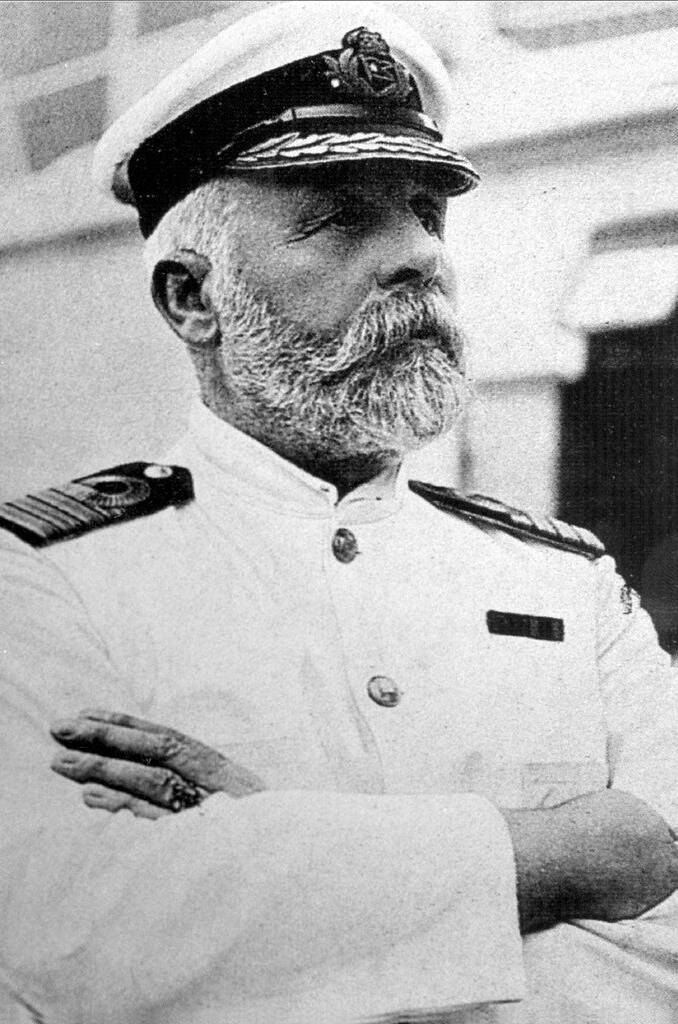
Public DomainAccounts of Captain Edward Smith’s final moments differ.
Why Did The Titanic Sink?
Was Captain Edward John Smith to blame for the Titanic‘s sinking? Some have faulted him for maintaining a high speed during the doomed voyage, and for ignoring iceberg warnings. But the truth of these accusations is complex.
It’s true that the Titanic was traveling fast, at a speed of 20.5 knots (23.6 mph) when it hit the iceberg. Why?
Some have theorized that Smith was trying to beat the record set by the Olympic, that he was pressured into maintaining a high speed by J. Bruce Ismay, the White Star chairman onboard the ship, that he believed that the crew would have time to react to ice sightings, even at high speed, or that the high speed was necessary because of a fire burning in the ship’s coal bunkers. But his motivations are uncertain.
As for the icebergs? Smith didn’t outright ignore the warnings, but he may have taken them less seriously than he should have. G.J. Cooper, who wrote Titanic Captain: The Life of Edward John Smith, explained that Smith may have “registered” the warnings without reacting to them.
“Smith certainly did not ignore ice warnings per se, and he made sure the ones that reached the bridge were all posted in the chart room,” Cooper told the BBC in 2012. He added: “However, ice warnings were just that, simply warnings that ice was seen at X coordinates at a certain time which Smith may have registered rather than reacted to.”
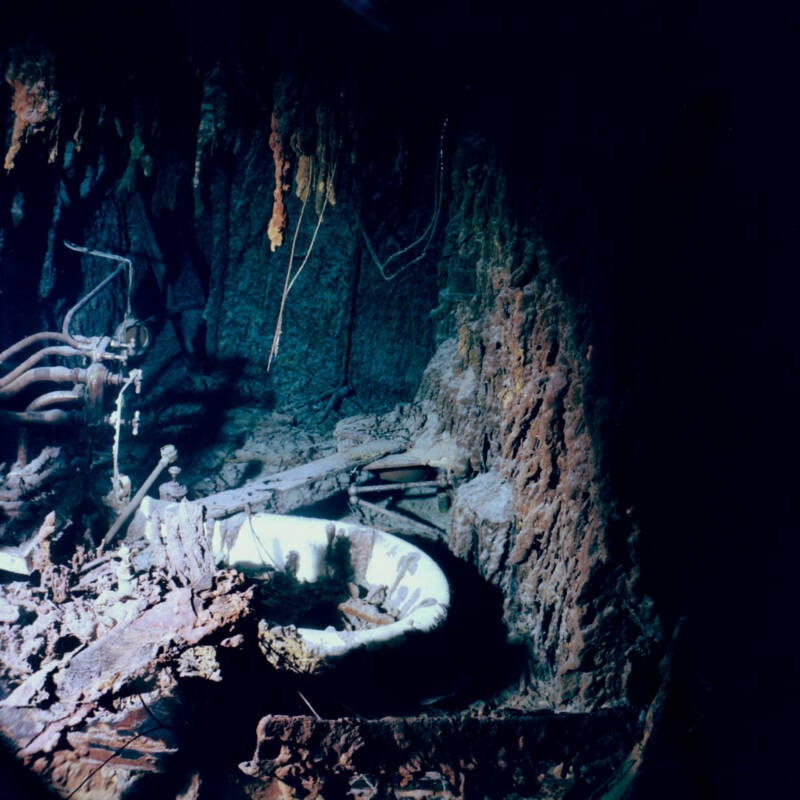
Public DomainThe bathtub in Captain Edward Smith’s bathroom aboard the RMS Titanic.
That said, British and American investigations into Smith’s conduct came to different conclusions. Though the British investigation found that he had reacted without fault, History reports that the American investigation concluded that Smith’s “indifference to danger was one of the direct and contributing causes of this unnecessary tragedy.”
However, Edward Smith wasn’t alone to blame for the sinking. The ship may have been made with faulty rivets, its “watertight” compartments turned out to be not watertight at all, and the captain of the nearby Californian failed to respond to the Titanic‘s multiple calls of distress. (The captain, Stanley Lord, had reportedly been informed about the emergency flares sent up by the Titanic, but chose not to investigate.)
Though rumors persisted that Smith had somehow survived the sinking, it’s almost certain that the captain of the Titanic went down with his ship.
After reading about Edward Smith, the captain of the Titanic, learn about some of the wildest conspiracy theories about the Titanic’s sinking. Or discover the heartbreaking stories behind these Titanic artifacts.





